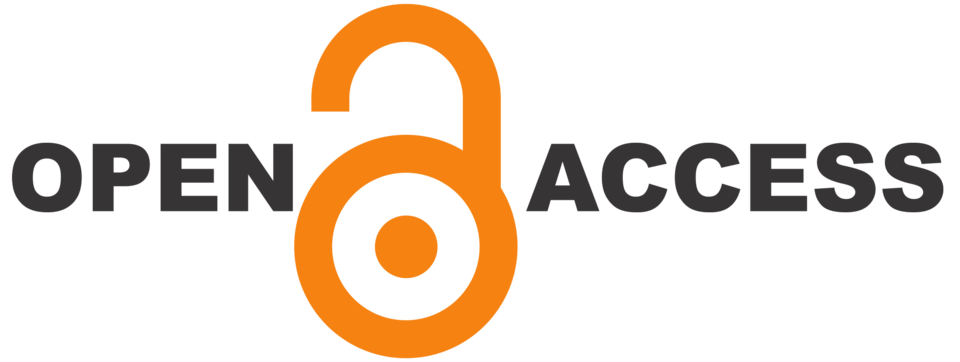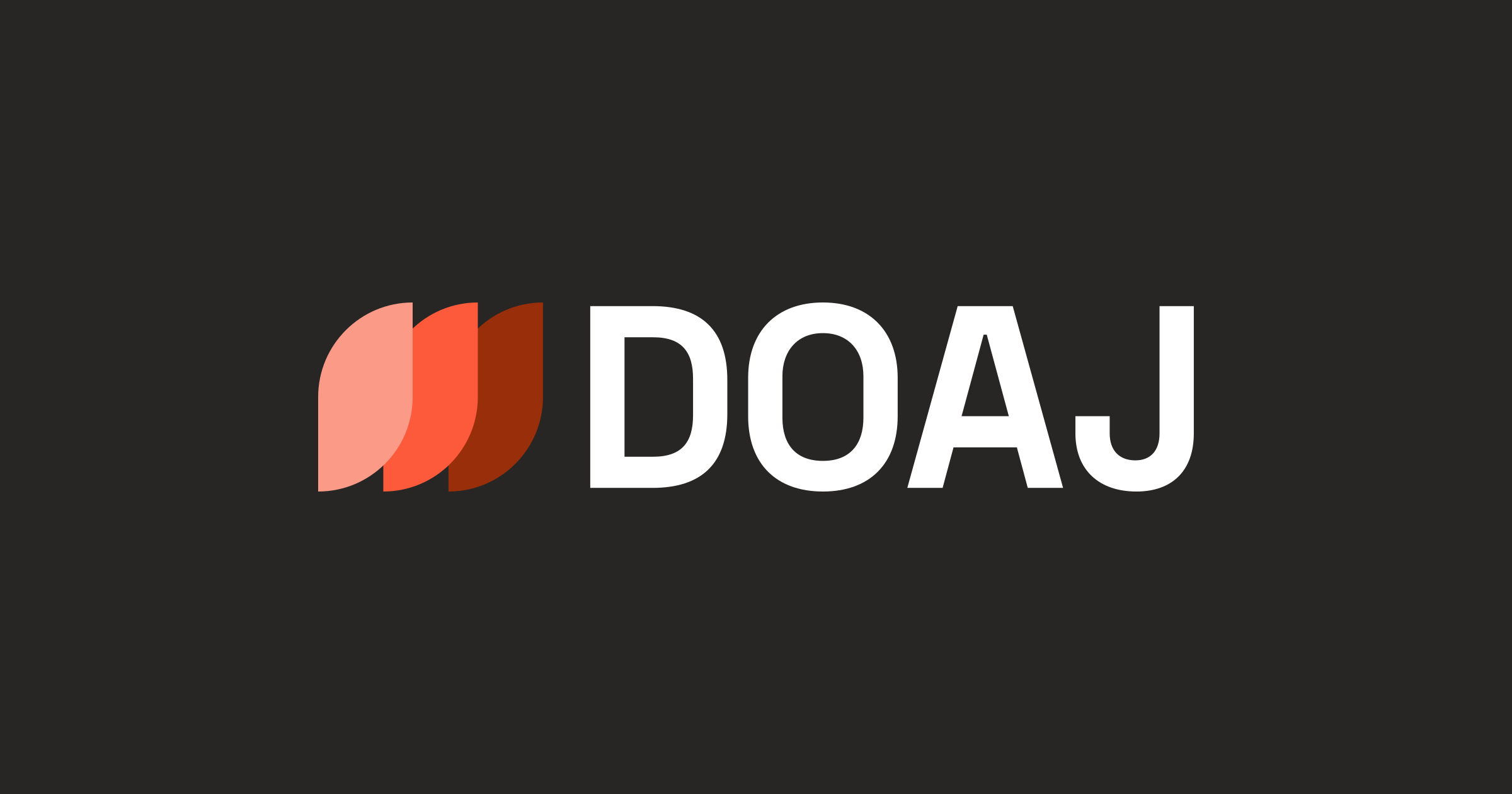Hilla University College Journal For Medical Science
Contents
- About the Journal
- Language
- Types of Articles
- Before Submission
- Preparation of Manuscripts
- Online submission
- Initial evaluation
- Submission Declaration and Verification
- Article structure
- Proofs
- Revised manuscripts
- After acceptance
- Peer Review
- Ethical Guidelines
- Complying with Ethics of Experimentation
- Studies in humans and animals
- Supplementary materials
- Article Publishing Charge
- Repository policy
About the Journal
Hilla university college journal for medical science is an Open Access international, peer-reviewed journal publishing high-quality, original research. Please see the journal's Aims & Scope for information about its focus and peer-review policy. Open Access means you can publish your research so it is free to access online as soon as it is published, meaning anyone can read (and cite) your work. Please note that this journal only publishes manuscripts in English. Hilla university college journal for medical science accepts the following types of article: original papers, reviews, book reviews.
Language
Manuscripts must be written in English in a clear and concise manner. Any author who is not fluent in idiomatic English is urged to seek assistance with manuscript preparation prior to submission. Reviewers are not expected to correct grammatical errors and any deficiency in this area may detract from the scientific content of the paper and result in acceptance delays or rejection.
Types of Articles
The journal seeks to publish four types of contributions in the form of original articles, short communications, reviews, and mini reviews.
- Original articles: Articles which represent in-depth research in various scientific disciplines.
- Short communications: Should be complete manuscripts of significant importance. However, their length and/or depth do not justify a full-length paper. The total number of figures and tables should not exceed 4. The number of words should be = 3,000
- Review articles: Should normally comprise less than 10,000 words; contain unstructured abstract and includes up-to-date references. Meta-analyses are considered as reviews. Special attention will be paid to the teaching value of review papers.
- Letter to editor: These should be short and decisive observations. They should preferably be related to articles previously published in the Journal or views expressed in the journal. They should not be preliminary observations that need a later paper for validation. The letter could have up to 500 words and 8 references. It could be generally authored by not more than four authors.
- Case reports: New, interesting and rare cases can be reported. They should be unique, describing a great diagnostic or therapeutic challenge and providing a learning point for the readers. Cases with clinical significance or implications will be given priority. These communications could be of up to 1000 words (excluding Abstract and references) and should have the following headings: Abstract (unstructured), Key-words, Introduction, Case report, Discussion, Reference, Tables and Legends in that order. The manuscript could be of up to 1000 words (excluding references and abstract) and could be supported with up to 10 references. Case Reports could be authored by up to four authors.
Before Submission
Please make sure that your manuscript meets the below criteria:
- Your manuscript is an original work and has not been published or is currently under review with another journal or Conference Proceedings.
- Your work meets all the Research Ethics. The manuscript should contain a separate section of "Ethics Approval" if the work involves human or animal subjects.
- The English of the manuscript is acceptable, and it sresearhould be free of grammatical and spelling errors.
- The figures included in the manuscript should be of acceptable quality.
- A cover letter from the corresponding author should be prepared, with the full address, email, and phone number of all the authors, with a statement that the manuscript is based on original research and has not been submitted to other journals or sources for publication. The authors should also state that the work described has not been published previously, that it is not under consideration for publication elsewhere, that its publication is approved by all authors, and that, if accepted, it will not be published elsewhere, including electronically, in the same form, in English or in any other language.
- Make sure to prepare a Copyright Form to include with the manuscript files.
- Make sure that your manuscript is conform to the guidelines of the journal shown below. Submissions that don't adhere to these guidelines will be rejected or returned to the Author prior to the peer review process.
Publishing Guidelines
Manuscript Template Guide
- The manuscript should be written in English only.
- Prepare text using MS Word office
- o When submitting an article, authors must note that 11 types of documents can be uploaded. These include:
- Mandatory (5 documents): Title page, Manuscript, Cover letter, Copyright, Author contribution Statement, You can use the following templates as a guide in writing your paper: title page template, manuscript template, and author contribution statement.
- Mandatory under certain conditions (2 documents): Ethical approval, Animal welfare statement.
- Optional (4 documents): Figure, Table, Dataset, and Supplementary documents.
- The Title page document must contain (The Submission Title, Authors’ Names, Affiliations, Authors’ Emails, and ORCIDs) and should be provided in English.
- The Manuscript document should not contain (The Authors’ Names, Affiliations, Emails, ORCIDs, and authors’ contribution statement).
- The manuscript's main title is left-aligned and in Arial 20-point, boldface type.
- The English abstract should be clear, written in one full paragraph under the main title, and must not exceed 300 words.
- Keywords are written under the abstract (minimum of five keywords), in alphabetical order.
- First-order headings (Introduction, Materials and Methods, Results and Discussion, Conclusion, References) should be boldface, and initially capitalized.
- Authors may separate or merge the results with the discussion
- Second-order headings should be initially capitalized.
- All authors should include their affiliations, email addresses, and ORCID links.
- Tables and figures should be placed in the results section in sequence order, not at the end of the manuscript.
- Figure captions should appear below the figures in 8-point, non-boldface Arial font. Example: “Fig. 1. Caption.” Use (Fig. 1, Fig. 2, etc.) when referring to figures in the text.
- Table titles should be placed above the tables. Example: “Table 1. Title.” Use (Table 1, Table 2, etc.) to refer to tables in the text. Table font should be 8-point Times New Roman.
- Equations should be numbered sequentially using Arabic numerals. Numbers must be placed at the right edge in parentheses: (1), (2), etc. Refer to them as Eq. (1), Eq. (2), etc., in the text. Using figures instead of equations is not acceptable.
- All numbers should be written using the Arabic numeral system (e.g., 1, 2, 3 …).
Reference Writing Guide
- References are numbered and cited in the text using superscripts, for example: (a description regarding the reference1 or a description regarding the reference1,2 or a description regarding the reference1-4). References must appear in sequential order within the text, table, or figure.
- Put the superscript Arabic numerals to cite the reference. For example, number one refers to the first reference used in the manuscript and is listed as the first entry in the reference list at the end of the manuscript.
- References should be written in English and follow the Vancouver Citing & Referencing style.
Preparation of Manuscripts
Manuscripts must be prepared in accordance with "Uniform requirements for Manuscripts submitted to Biomedical Journals" developed by the International Committee of Medical Journal Editors (October 2008). The uniform requirements and specific requirements of HUCMSJ are summarized below. Before submitting a manuscript, contributors are requested to check for the latest instructions available and accepts manuscripts written in American English.
Online submission
Manuscripts should be submitted by one of the authors of the manuscript through the online Manuscript Tracking System (MTS) following the instructions given on the screen. Only Word (.doc, .docx, .rtf) files can be submitted through the MTS, and there is no page limit. Submissions by anyone other than one of the authors will not be accepted. The submitting author takes responsibility for the manuscript during submission and peer review. If for some technical reason, submission through the MTS is not possible, the author can contact to hucmsj@hilla-unc.edu.iq for support.
Initial evaluation
All submitted manuscripts will be checked by the Editorial Office to determine whether they are properly prepared and whether they follow the ethical policies of the journal. All submitted manuscripts are screened for potential plagiarism via iThenticate software. Manuscripts that do not fit the journal's ethics policy or do not meet the standards of the journal will be rejected before peer review. Incomplete manuscripts not prepared in the advised style will be sent back to authors without scientific review. After these checks, the Editorial Office will consult the journal’s Editor-in-Chief to determine whether the manuscript fits the scope of the journal and whether it is scientifically sound. Manuscripts with insufficient priority for publication will be rejected promptly. Please write your text in good English (American usage is accepted). The Editor reserves the right to reject a manuscript on the grounds of insufficient language quality. Reject decisions at this stage will be verified by the Editor-in-Chief.
Statements & Declarations:
The following statements must be included in your submitted manuscript under the heading 'Statements and Declarations'. This should be placed after the References section. Please note that submissions that do not include required statements will be returned as incomplete.
The following statements must be included in your submitted manuscript under the heading 'Statements and Declarations'. This should be placed after the References section. Please note that submissions that do not include required statements will be returned as incomplete.
Article structure
Effective from 1/1/2026,The manuscript should be compiled in the following order:
- Title page
- Abstract, Keywords
- Introduction
- Material and methods (Experimental or Methodology or Patients and methods)
- Results
- Discussion (Results and discussion can be combined in one section)
- Conclusion
- Acknowledgment(s)
- Funding
- Competing Interests
- Author Contributions
- Author contributions: CRediT
- Data Availability
- Ethics approval
- Consent to participate
- Declaration of generative AI in scientific writing
- References
- Tables
- Figures
Title page
<The title page should include the following in English and Arabic:
- Title: The title should be brief, concise, and descriptive. It should not contain any literature references or compound numbers or non-standardized abbreviations. It should be centered, typed in Times New Roman 14 point and boldface.
- Authors and affiliations: Supply given names, middle initials, and family names for complete identification. They should be centered beneath the title and typed in Times New Roman 11-point, non-italic, and boldface. Use superscript lowercase letters to indicate different affiliations, which should be as detailed as possible and must include department, faculty/college, University, the city with zip code or P.O. Box and country. The primary affiliation for each author should be the institution where most of their work was done. if an author has subsequently moved, the current address may additionally be stated. Addresses will not be updated after the publication of the article.
- Corresponding author: Should be indicated with an asterisk, and contact details (Tel., fax, and e-mail address) should be placed in a footnote. If available, the 16-digit ORCID of the corresponding author.
- Conceptualization
- Data curation
- Formal analysis
- Funding acquisition
- Investigation
- Methodology
- Project administration
- Resources
- Software
- Supervision
- Validation
- Visualization
- Writing – original draft
- • Writing – review and editing
- Generative AI and AI-assisted technologies should only be used in the writing process to improve the readability and language of the manuscript.
- The technology must be applied with human oversight and control and authors should carefully review and edit the result, as AI can generate authoritative-sounding output that can be incorrect, incomplete or biased. Authors are ultimately responsible and accountable for the contents of the work.
- Authors must not list or cite AI and AI-assisted technologies as an author or co-author on the manuscript since authorship implies responsibilities and tasks that can only be attributed to and performed by humans.
- Title of new section: Declaration of generative AI and AI-assisted technologies in the writing process.
- Statement: During the preparation of this work the author(s) used [NAME TOOL / SERVICE] in order to [REASON]. After using this tool/service, the author(s) reviewed and edited the content as needed and take(s) full responsibility for the content of the published article.
- Article with 1 to 6 authors:
Author AA, Author BB, Author CC, Author DD. Title of the article. Abbreviated title of the journal. Date of publication YYYY Mon DD; volume number(issue number): page numbers. Example: Petitti DB, Crooks VC, Buckwalter JG, Chiu V. Blood pressure levels before dementia. Arch Neurol. 2005 Jan;62(1):112-6. - Article with more than 6 authors (list 6 authors only and use et al for the remaining):
- The name of the ethics committee(s) or institutional review board(s) involved.
- The number or ID of the ethics approval(s).
- A statement that human participants have provided informed consent before taking part in the research.
- Follow international, national, and institutional guidelines for the humane treatment of animals.
- Receive approval by the ethics review committee at the institution or practice at which the research was conducted and provide details on the approval process, names of the ethics committee(s) or institutional review board(s) involved, and the number or ID of the ethics approval(s) in the Ethics Approval section.
- Provide justification for use of animals and the species selected.
- Provide information about housing, feeding, and environmental enrichment, and steps taken to minimize suffering.
- Provide mode of anesthesia and euthanasia.
Title, Authors, and affiliations in Arabic should be provided in the same order as mentioned above on a separate page in the same file.
Short running title (running head) with 80 characters as maximum.
Abstract, Keywords
Abstract
The abstract should be self-contained, citation-free, and should not exceed 300 words. The abstract should briefly describe the purpose of the study, how the investigation was performed, the most important results, and the principal conclusions that were drawn from the results, respectively. Nonstandard or uncommon abbreviations should be defined at first mention within the abstract. The abstract should be typed in Times New Roman, 9-point, non-italic and non-boldface.
Keywords
Authors are asked to provide (4 to 6) keywords, separated with semicolons, and should be typed in Times New Roman, 10-point, non-italic and non-boldface.
Introduction
This section should be succinct, with no subheadings. The author(s) should strive to define the significance of the work and the justification for its publication. Any background discussion should be brief and restricted to pertinent material.
Material and methods (Experimental or Methodology or Patients and methods)
This part should contain sufficient detail that would enable all procedures to be repeated. It can be divided into subsections if several methods are described. Authors should be as concise as possible in experimental descriptions. The experimental section must contain all of the information necessary to guarantee reproducibility. Previously published methods should be indicated by a reference and only relevant modifications should be described. All vendor details, including company, city, and country, should be mentioned for chemicals, reagents, strains, etc. For statistical analysis, please state the appropriate test(s) in addition to a hypothesized p-value or significant level (for example 0.05).
Results and Discussion
They should be combined. The study results should be clear and concise. Restrict the use of tables and figures to depict data that is essential to the message and interpretation of the study. The results should be presented in a logical sequence in the text, tables and illustrations. The discussion should explore the significance of the results of the work, not repeat them. Include in the discussion the implications of the findings and their limitations, how the findings fit into the context of other relevant work, and directions for future research.
Conclusion
The main conclusion(s) of the study should be presented in a short conclusion statement highlighting the goals of the study and its importance. State new hypotheses when warranted. Include recommendations when appropriate.
Acknowledgment(s)
All acknowledgments (if any) should be included at the very end of the manuscript before the references. Anyone who made a contribution to the research or manuscript, but who is not a listed author, should be acknowledged (with their permission).
Funding
Please describe any sources of funding that have supported the work. The statement should include details of any grants received (please give the name of the funding agency and grant number).
Example statements:
“This work was supported by […] (Grant numbers […] and […]). Author A.B. has received research support from Company A.”
“The authors declare that no funds, grants, or other support were received during the preparation of this manuscript.”
Competing Interests
Authors are required to disclose financial or non-financial interests that are directly or indirectly related to the work submitted for publication. Interests within the last 3 years of beginning the work (conducting the research and preparing the work for submission) should be reported. Interests outside the 3-year time frame must be disclosed if they could reasonably be perceived as influencing the submitted work.
Example statements:
“Financial interests: Author A and B declare they have no financial interests. Author C has received speaker and consultant honoraria from Company M. Dr. C has received speaker honorarium and research funding from Company M and Company N. Author D has received travel support from Company O. Non-financial interests: Author D has served on advisory boards for Company M and Company N.”
“The authors have no relevant financial or non-financial interests to disclose.”
Author Contributions
Authors are encouraged to include a statement that specifies the contribution of every author to the research and preparation of the manuscript.
Example statement:
“All authors contributed to the study conception and design. Material preparation, data collection and analysis were performed by [full name], [full name] and [full name]. The first draft of the manuscript was written by [full name] and all authors commented on previous versions of the manuscript. All authors read and approved the final manuscript.”
Author Contributions: Credit
Corresponding authors are required to acknowledge co-author contributions using CRediT (Contributor Roles Taxonomy) roles:
We advise you to read more about CRediT and view an example of a CRediT author statement.
Data Availability
This journal encourages authors to provide an optional statement of data availability in their article. Data Availability Statements should include information on where data supporting the results reported in the article can be found, including, where applicable, hyperlinks to publicly archived datasets analysed or generated during the study. Data availability statements can also indicate whether data are available on request from the authors and where no data are available, if appropriate.
Example statements:
“The datasets generated during and/or analysed during the current study are available in the [NAME] repository, [PERSISTENT LINK TO DATASETS]”
“The datasets generated during and/or analysed during the current study are available from the corresponding author on reasonable request.”
In addition to the above, manuscripts that report the results of studies involving humans and/or animals should include the following declarations:
Ethics approval
Authors of research involving human or animal subjects should include a statement that confirms that the study was approved (or granted exemption) by the appropriate institutional and/or national research ethics committee (including the name of the ethics committee and reference number, if available). For research involving animals, their data or biological material, authors should supply detailed information on the ethical treatment of their animals in their submission. If a study was granted exemption or did not require ethics approval, this should also be detailed in the manuscript.
“This study was performed in line with the principles of the Declaration of Helsinki. Approval was granted by the Ethics Committee of University B (Date.../No....).”
“This is an observational study. The XYZ Research Ethics Committee has confirmed that no ethical approval is required.”
Consent to participate
For all research involving human subjects, freely-given, informed consent to participate in the study must be obtained from participants (or their parent or legal guardian in the case of children under 16) and a statement to this effect should appear in the manuscript.
Example statement:
“Informed consent was obtained from all individual participants included in the study.”
“Written informed consent was obtained from the parents.”
Consent to publish
Individuals may consent to participate in a study, but object to having their data published in a journal article. If your manuscript contains any individual person’s data in any form (including any individual details, images or videos), consent for publication must be obtained from that person, or in the case of children, their parent or legal guardian. This is in particular applicable to case studies. A statement confirming that consent to publish has been received from all participants should appear in the manuscript.
Example statement:
“The authors affirm that human research participants provided informed consent for publication of the images in Figure(s) 1a, 1b and 1c.”
Declaration of generative AI in scientific writing
Authors must declare the use of generative AI in scientific writing upon submission of the paper. The following guidance refers only to the writing process, and not to the use of AI tools to analyse and draw insights from data as part of the research process:
The use of generative AI and AI-assisted technologies in scientific writing must be declared by adding a statement at the end of the manuscript when the paper is first submitted. The statement will appear in the published work and should be placed in a new section before the references list. An example:
The declaration does not apply to the use of basic tools, such as tools used to check grammar, spelling and references. If you have nothing to disclose, you do not need to add a statement.
Please read Elsevier’s author policy on the use of generative AI and AI-assisted technologies, which can be found in our GenAI Policies for journals.
Please note: to protect authors’ rights and the confidentiality of their research, this journal does not currently allow the use of generative AI or AI-assisted technologies such as ChatGPT or similar services by reviewers or editors in the peer review and manuscript evaluation process, as is stated in our GenAI Policies for journals. We are actively evaluating compliant AI tools and may revise this policy in the future.
References
Journal Articles:
Author AA, Author BB, Author CC, Author DD, Author EE, Author FF, et al. Title of the article. Abbreviated title of the journal. Date of publication YYYY Mon DD; volume number(issue number): page numbers.
Example: Hallal AH, Amortegui JD, Jeroukhimov IM, Casillas J, Schulman CI, Manning RJ, et al. Magnetic resonance cholangiopancreatography accurately detects common bile duct stones in resolving gallstone pancreatitis. J Am Coll Surg. 2005 Jun;200(6):869-75.
Figures
Figures and tables should not be submitted in separate files. If the article is accepted, authors will be asked to provide the source files of the figures. Each figure should be supplied in a separate electronic file. All figures should be cited in the manuscript in consecutive order. Figures should be supplied in either vector art formats (Illustrator, EPS, WMF, FreeHand, CorelDraw, PowerPoint, Excel, etc.) or bitmap formats (Photoshop, TIFF, GIF, JPEG, etc.). Bitmap images should be of 300 dpi resolution at least unless the resolution is intentionally set to a lower level for scientific reasons. If a bitmap image has labels, the image and labels should be embedded in separate layers. Figures should be referred to as Fig. 1, Figs. 2, 3-5, using Arabic numerals. Ensure that all tables, figures, and schemes are cited in the text in numerical order. Figure parts should be denoted by lowercase letters (a,b,c,..etc).
Tables
Tables should be cited consecutively in the text. Every table must have a descriptive title and if numerical measurements are given, the units should be included in the column heading. Vertical rules should not be used. Figure and table captions should be 9-point Times New Roman, boldface, and non-italic. Initially capitalize only the first word of the caption. Figure captions are to be below the figures and Table titles are to be fully justified right and left above the table.
Nomenclature and Units
All measurements and data should be given in SI units where possible, or in other internationally accepted units in parentheses throughout the text. Illustrations and Tables should use conventional units, with conversion factors given in legends or footnotes.
Proofs
One set of page proofs (as PDF files) will be sent by e-mail to the corresponding author. Please use this proof only for checking the typesetting, editing, completeness, and correctness of the text, tables, and figures. We will do our best to get your article published quickly and accurately. Therefore, it is important to ensure that all of your corrections are sent back in one communication within 48 h. proofreading is solely your responsibility. Note that the publisher may proceed with the publication of an article if no response is received.
Revised manuscripts
The authors must submit the revised version of their submissions within one month of receiving the editorial decision. Revision does not mean that the manuscript will be accepted for publication, as the amended submissions could be sent out for reevaluation. In response to reviewers’ comments, the authors must ensure that each comment is followed by their revision and/or response. In instances where an author disagrees with a comment or suggestion of a reviewer, please justify the reason. Any associated changes in the manuscript must be highlighted in the revised form of the manuscript to facilitate the process of re-evaluation.
After acceptance
Upon acceptance, your article will be exported to production to undergo typesetting. once the typesetting is complete, you will receive the proofs.
Peer Review
All manuscripts are subjected to peer review and are expected to meet the standards of academic excellence. If approved by the editor, submissions will be considered by peer reviewers, whose identities will remain anonymous to the authors and vice versa, identities of authors will remain anonymous to the reviewers (Double-blind peer review). The decision regarding the acceptance or rejection of a manuscript is the responsibility of the editorial board and is based on the recommendations of the reviewers (peer-reviewed process).
Our Research Integrity team will occasionally seek advice outside standard peer review, for example, on submissions with serious ethical, security, biosecurity, or societal implications. We may consult experts and the academic editor before deciding on appropriate actions, including but not limited to recruiting reviewers with specific expertise, assessment by additional editors, and declining to further consider a submission.
Ethical Guidelines
In any study on human or animal subjects, the following ethical guidelines must be observed. For any experiments on humans, all work must be conducted in accordance with the Declaration of Helsinki (1964). Manuscripts describing experimental work which carries a risk of harm to human subjects must include a statement that the experiment was conducted with the human subjects’ understanding and consent, as well as a statement that the responsible Ethical Committee has approved the experiments. In the case of any animal experiments, the authors must provide a full description of any anesthetic or surgical procedure used, as well as evidence that all possible steps were taken to avoid animal suffering at each stage of the experiment.
Complying with Ethics of Experimentation
Please ensure that all research reported in submitted papers has been conducted in an ethical and responsible manner, and is in full compliance with all relevant codes of experimentation and legislation. All original research papers involving humans, animals, plants, biological material, protected or non-public datasets, collections or sites, must include a written statement under an Ethics Approval section including the following:
Research involving animals must adhere to ethical standards concerning animal welfare. All original research papers involving animals must:
Studies in humans and animals
If the work involves the use of human subjects, the author should ensure that the work described has been carried out in accordance with The Code of Ethics of the World Medical Association(Declaration of Helsinki) for experiments involving humans. The manuscript should be in line with the Recommendations for the Conduct, Reporting, Editing and Publication of Scholarly Work in Medical Journals and aim for the inclusion of representative human populations (sex, age, and ethnicity) as per those recommendations. The terms sex and gender should be used correctly.
Authors should include a statement in the manuscript that informed consent was obtained for experimentation with human subjects. The privacy rights of human subjects must always be observed
All animal experiments should comply with the ARRIVE guidelines and should be carried out in accordance with the U.K. Animals (Scientific Procedures) Act, 1986 and associated guidelines, EU Directive 2010/63/EU for animal experiments, or the National Research Council's Guide for the Care and Use of Laboratory Animals and the authors should clearly indicate in the manuscript that such guidelines have been followed. The sex of animals must be indicated, and where appropriate, the influence (or association) of sex on the results of the study.
Supplementary materials
Authors can publish online supplementary files along with their articles or book chapter. Each supplementary file should include an article title, journal name, authors' names, affiliations, and email address of the corresponding author. supplementary files will be published as received from the authors without any conversion, editing, or reforming.
Article Publishing Charge
There are 100,000 Iraqi dinars Article Processing Charges (APC) for publication of the journal on all submissions.
>Repository policy
Hilla University Journal for medical science has a policy that allows authors to submit all versions of their articles to any repository they choose. The open-access options allowed by the journal's policy









Social Media: